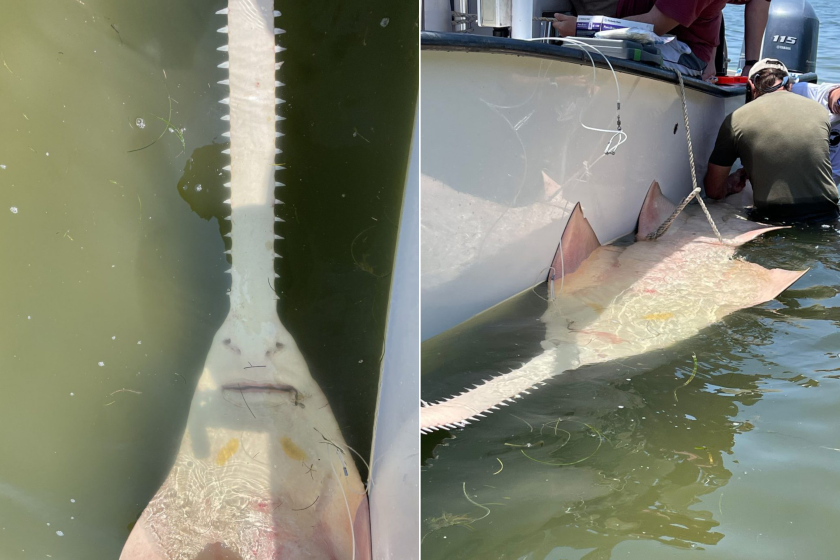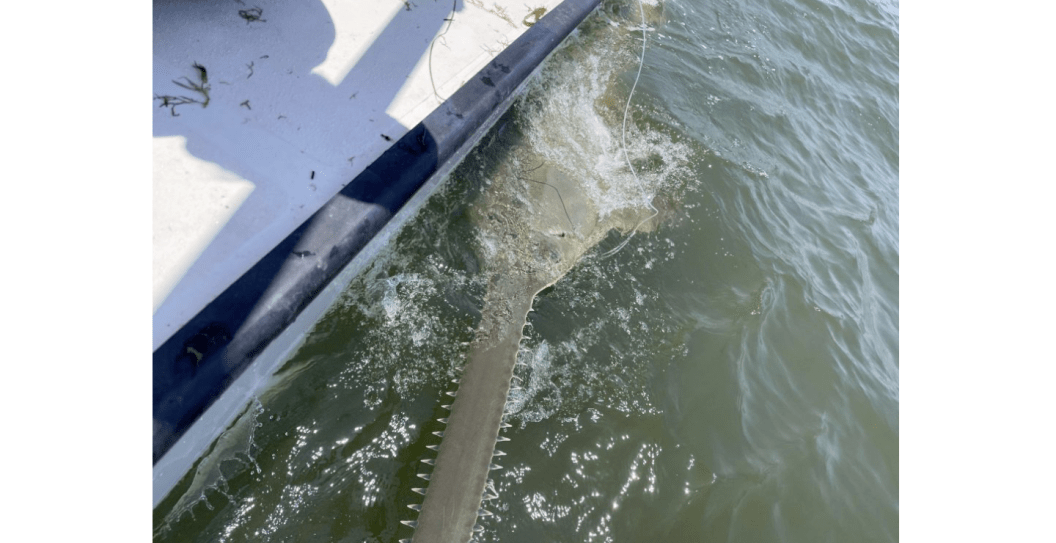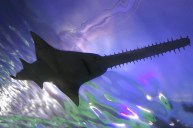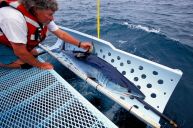The team was attempting to secure a juvenile shark for graduate students to take a closer look at when a sudden, sharp tug on the line led to the up-close encounter with a full-grown smalltooth sawfish.
At first, Florida State University marine ecologist and co-teacher of the class, Dean Grubbs, suspected they had latched onto a nurse shark.
"I was pretty sure this was a sawfish, but I remained stone-faced because I didn't want to disappoint the students if I was wrong," Grubbs said in a press release. "I saw the tail before the rostrum, so I lost my calm at that point and screamed 'Sawfish! It's a sawfish!'"
Sawfish, which were once a common sight along the Gulf and Atlantic Coasts, are a type of elasmobranch, a group that also contains sharks, skates, and rays. They are typically found in shallow, coastal waters, according to the National Oceanic and Atmospheric Administration (NOAA.)

Derrick Biglin and Alex Tate/Florida Museum
The rostrum is the long, flattened, sharp-tooth lined nose structure on the sawfish, which are critically endangered. A century of habitat loss, overfishing, and accidental catch crashed the population by 90 percent and landed the species a spot as the first marine fish to receive federal protection under the Endangered Species Act in 2003.
Population estimates vary, but the Natural Resources Defense Council, reported there may be as many as 5,000 or as few as 500 adult species left in the world.
The Florida team gently restrained the sawfish while another team member went back to shore to get a tagging device. They hadn't brought one onboard because the likelihood of needing one was so low. The fish was tagged and then released, so that scientists could observe its movements now for up to ten years. The data collected will be used for sawfish population recovery efforts.
Researchers caught and tagged a 13-ft sawfish last month. It's the furthest north a sawfish has been tagged in decades. Sawfish were the first native marine fish listed under the endangered species act, and the sighting is a sign that they're recovering. https://t.co/d6K5iT4J8q pic.twitter.com/EIQdgkFn76
— Florida Museum (@FloridaMuseum) July 10, 2023
The species rebound has been slow, even with protective measures in place. Until the Florida State University crew's incidental finding, it had been three or four decades since anyone had tagged a sawfish in that area of Cedar Key. But recent findings offer a glimmer of hope for the struggling species.
Earlier this year three juvenile sawfish were tagged and released in Tampa Bay, which is south of Cedar Key, according to the Tampa Bay Times. And the Cedar Key sawfish was a breeding-size female with mating scars on its sides and fins; all good signs for population recovery.
"What's remarkable to me is that they're creeping back into exactly the previous habitats and range from which they've been extirpated," Gavin Naylor, director of the Florida Museum of Natural History's shark research program, said. "It's as if they have a deeply embedded knowledge of where to go."
READ MORE: Deep-Sea Fish Are Washing Ashore in Oregon and Scientists Don't Know Why




